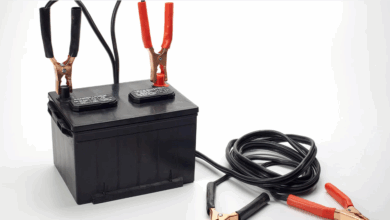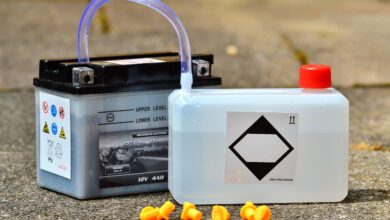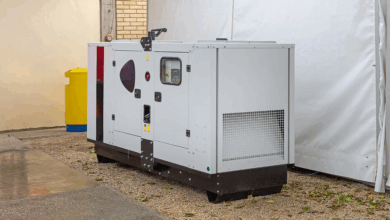Picking the Perfect Generator: Our Top Recommendations

Picking the Perfect Generator: Our Top Recommendations for Reliable Power
In an increasingly unpredictable world, having a reliable source of backup power is no longer a luxury – for many, it’s a necessity. Whether you’re facing unexpected power outages due to severe weather, need electricity for a remote job site, or want to bring the comforts of home on a camping or RV adventure, a generator provides peace of mind and essential functionality.
But with a dizzying array of types, sizes, and features available, how do you pick the perfect generator for your needs? It’s not a one-size-fits-all answer. This guide will walk you through the key considerations and highlight some top-tier recommendations across different categories to help you make an informed decision.
First Things First: What Do You Need to Power?
Before you even start looking at models, the most crucial step is to assess your power requirements. What specific appliances, tools, or systems do you need to run, and simultaneously?
- Identify Essential Items: Make a list of everything you absolutely must power during an outage or at your remote location. This might include refrigerators, freezers, lights, medical equipment, sump pumps, furnaces, computers, or specific tools.
- Calculate Wattage: Each item has a wattage requirement. You’ll typically find this on a label on the appliance/tool or in its manual. You need to consider two types of wattage:
- Running Watts: The power needed to keep an item running steadily.
- Starting Watts (or Surge Watts): The extra burst of power needed to start motor-driven appliances like refrigerators, air conditioners, or power tools. This is often 2-3 times the running wattage.
- Total Your Needs: Add up the running watts of everything you might run simultaneously. Then, identify the single item on your list with the highest starting watts. Add this highest starting wattage to your total running wattage. This sum gives you the approximate minimum starting wattage capacity your generator needs. Your generator’s running wattage should exceed your total running watts requirement.
Example: You need to run a fridge (600 running / 1800 starting), lights (500 running / 0 starting), and a furnace fan (400 running / 1200 starting).
- Total Running Watts: 600 + 500 + 400 = 1500W
- Highest Starting Watts Item: Fridge at 1800W
- Minimum Required Starting Watts for Generator: 1500 (total running) + 1800 (highest single starting) = 3300W. You’d look for a generator with a running wattage of at least 1500W and a starting/surge wattage of at least 3300W (though aiming higher provides a buffer).
Understanding Generator Types
Generators aren’t all built the same. The type you choose depends heavily on your power needs, portability requirements, noise tolerance, and budget.
-
Conventional Portable Generators:
- Pros: Wide range of sizes (from small to large), relatively affordable, good for powering basic appliances, tools, and lights.
- Cons: Can be quite noisy, produce power with a less "clean" waveform (can be potentially harmful to sensitive electronics like laptops or modern TVs), heavier and bulkier than inverters.
- Best For: Emergency home backup for essential circuits (via a transfer switch, always professionally installed), construction sites, powering tools where noise isn’t a primary concern.
-
Inverter Generators:
- Pros: Much quieter than conventional generators (often described as campground friendly), produce clean, stable power (safe for electronics), more fuel-efficient, often lighter and more portable. Many can be run in parallel with another identical unit to double the power output.
- Cons: Generally more expensive than conventional generators of the same wattage, typically available in lower wattage ranges (though larger inverter units are becoming more common).
- Best For: Camping, RVing, tailgating, powering sensitive electronics, quiet backyard power, smaller home backup needs.
- Standby Generators:
- Pros: Automatically turn on when utility power is lost, provide high wattage capable of powering most or all of your home, permanently installed outside, run on natural gas or propane (no need to refuel during long outages).
- Cons: Most expensive option, require professional installation, not portable.
- Best For: Permanent, whole-house or critical-circuit backup for long-term outages, homes with critical medical needs, businesses. (Note: This article focuses primarily on portable and inverter types).
Fuel Types
Generators run on various fuels, each with pros and cons:
- Gasoline: Most common, readily available (though can be scarce during widespread outages), relatively efficient, but fuel degrades over time (requires stabilizer).
- Propane: Longer shelf life than gasoline, cleaner burning, easy to store in tanks. Less energy dense than gasoline, meaning you’ll use more propane for the same power.
- Dual Fuel (Gasoline/Propane): Offers flexibility, switching between fuels as needed. Very popular choice.
- Diesel: More common in large, heavy-duty commercial or industrial generators. Fuel-efficient and durable.
- Natural Gas: Primarily used for standby generators connected directly to a home’s gas line. Unlimited fuel supply during an outage (if the gas line is unaffected).
Other Features to Consider:
- Electric Start: Makes starting much easier than pull cords.
- Outlets: Ensure the generator has the right types and number of outlets (e.g., 120V household, 240V, RV outlets, USB ports).
- Runtime: How long will it run on a full tank at a specific load? Important for long outages.
- Noise Level (Decibels): Pay attention to the dB rating at 23 feet. Lower is quieter.
- Portability: Weight, wheels, and handles are crucial if you need to move it.
- Safety Features: Low-oil shutoff (protects the engine), overload protection (protects the generator and appliances), GFCI outlets.
- Parallel Capability: For inverter generators, allows linking two units for more power.
Our Top Recommendations (By Category)
Based on common needs and well-regarded examples in the market (Note: Specific models change, so these are examples of types and popular choices):
-
For General Home Backup (Mid-Sized Portable)
- Type: Conventional or Dual Fuel Portable Generator (approx. 3500-7500 Running Watts)
- Why: Strikes a balance between cost, power output, and mobility. Can power essential appliances, maybe a small AC or well pump. Dual Fuel adds versatility.
- Example Category: Champion 4500W/3500W Dual Fuel Generator. Known for reliability, ease of use (electric start), and the flexibility of dual fuel. A very popular choice for homeowners needing flexible backup. Alternatively: DuroMax XPxxxxE series offers robust power for its size.
-
For Quiet Operation & Sensitive Electronics (Inverter)
- Type: Mid-Sized Inverter Generator (approx. 1600-3500 Running Watts)
- Why: Provides clean, stable power ideal for laptops, phones, TVs, and other sensitive devices. Much quieter than conventional generators, making them suitable for closer proximity use.
- Example Category: Honda EU2200i or Yamaha EF2200iS. These are the gold standard for quiet, reliable inverter power, albeit at a premium price. Alternatively: Westinghouse iGen2200/iGen2500 or Champion 2000W Inverter. These offer excellent value and performance for a lower cost. For slightly more power in an inverter, consider models like the Westinghouse iGen4500 or Champion 3500W Inverter.
- For Heavy-Duty Use & Work Sites (Large Portable)
- Type: High-Wattage Conventional or Dual Fuel Portable Generator (7500+ Running Watts)
- Why: Delivers significant power to run multiple high-draw tools, large appliances, or a substantial portion of a home (again, via transfer switch). Built rugged for demanding environments.
- Example Category: Generac GP8000E or DuroMax XP12000HX (Dual Fuel). These are workhorses designed for higher power demands, featuring robust frames and multiple outlets.
Important Buying and Safety Tips:
- Read Reviews: Check user reviews on retailer websites for insights into real-world performance and reliability.
- Check Warranty & Support: A good warranty can save you headaches down the line.
- NEVER Run Indoors: Generators produce deadly carbon monoxide fumes. Always operate them outdoors, far away (at least 20 feet) from windows, doors, and vents.
- Use a Transfer Switch: To safely power hardwired appliances (like furnaces, well pumps, or lights) in your home, install a manual or automatic transfer switch. This isolates the generator power from the utility grid and prevents dangerous backfeeding. Always use a qualified electrician for installation.
- Proper Extension Cords: Use heavy-duty, outdoor-rated extension cords that can handle the load of the appliances you’re powering.
- Fuel Storage: Store gasoline in approved containers, away from living areas and ignition sources.
- Regular Maintenance: Follow the manufacturer’s recommended maintenance schedule (oil changes, air filter cleaning/replacement, spark plug checks). Run the generator periodically (e.g., every few months) to ensure it starts and runs correctly.
FAQs
- How much wattage do I really need? Use the wattage calculation method described above. It’s better to have a bit more wattage than you think you need than not enough.
- What’s the main difference between portable and inverter generators? Noise level and power quality. Inverters are much quieter and provide clean power safe for sensitive electronics. Conventional portables are louder but often cheaper for high wattage.
- Can I run my generator in the rain or snow? No. Generators must be protected from moisture. Use a generator cover or place it under a canopy or in a purpose-built shelter designed for ventilation.
- How loud are generators? Noise is measured in decibels (dB). Conventional generators can range from 65 dB to over 80 dB (which is very loud). Inverter generators are typically much quieter, often in the 50-65 dB range. Look for the dB rating at 23 feet.
- How long will a generator run on a tank of fuel? This varies greatly depending on the fuel tank size, the load you’re placing on the generator, and its fuel efficiency. Check the manufacturer’s specifications for runtime estimates at 25% or 50% load.
- What maintenance is required? Typical maintenance includes checking/changing the oil, cleaning/replacing the air filter, checking/replacing the spark plug, and adding fuel stabilizer if storing fuel. Always consult your owner’s manual.
- Can I plug my generator directly into a wall outlet in my house? ABSOLUTELY NOT. This is known as "backfeeding" and is extremely dangerous. It can electrocute utility workers and damage your home’s electrical system. Always use a transfer switch professionally installed.
Conclusion
Choosing the perfect generator involves understanding your specific needs and matching them to the right type, size, and features. While standby generators offer the ultimate convenience, modern portable and inverter generators provide versatile, reliable power solutions for everything from emergency home backup to recreational use.
By assessing your wattage needs, considering the pros and cons of different generator types and fuel sources, and paying attention to important features and safety protocols, you can confidently select a generator that provides the power and peace of mind you require. Investing in a quality generator is an investment in preparedness – ensuring that when the lights go out, your essential power stays on.




![How to Bypass CO Sensor on Generator – [4-Step Safety Guide]](https://www.generator411.com/wp-content/uploads/2025/08/co-sensor-on-generator-390x220.png)